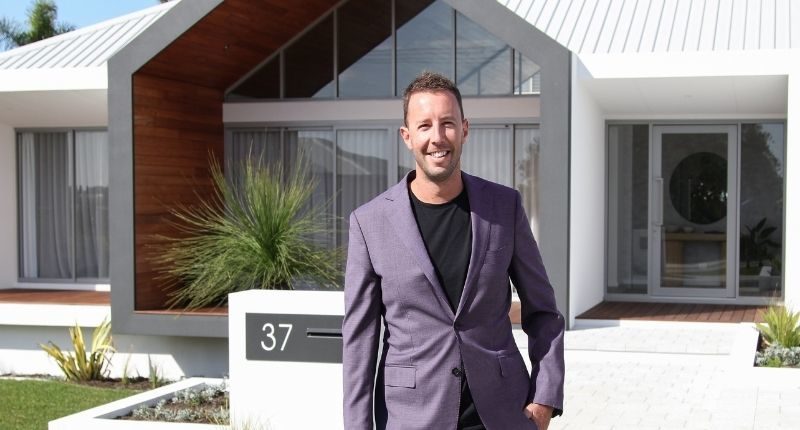- The home building industry was starting to recover in early 2020, then Covid hit
- Government stimulus filled the books, but supply shortages have raised costs
- Managing cashflow is the main issue for the industry, as well as a skills shortage
You could say Jay Walter was born into the industry. After all, his Dad Julian set up J-Corp back in 1983, which later became JWH Group after selling half to BGC.
Over the past fifteen years, he has worked in marketing for Midland Brick, business development for Plunkett Homes, as General Manager of the Rural Building Company, and for the past nine years, as General Manager of the JWH Group.
The group also includes the top end brand Oswald Homes, the individual lifestyle brand Residential Attitudes and WA Country Builders.

The various brands mean that the group services diversified segments of the market, from first home builders to tree changers to the high end, turning over $400 million and employing 650 staff and 2,500 sub-contractors.
So, with the upheaval in the home building industry thanks to Covid and government stimulus measures, it seemed like a good time to ask Jay Walter about the industry, where it is now and some of the current trends.
Impact of Covid
After some tough years, the industry had been showing “green shots” of recovery in the first few months of 2020, said Mr Walter.
Then Covid hit.
“It was a strange feeling as we saw enquiry and interest disappear to near zero. Display homes were closed and office and email enquiry dissipated rapidly,” Jay Walter told The Property Tribune.
“It was around the second or third week that we saw enquiry start to return as people were stuck at home but had a bit more time to browse and do their research… all of a sudden it didn’t appear to be so bad and daunting.”
Jay Walter

Government stimulus
As seems common in crises, governments turned to the home building industry to stimulate the economy. The HomeBuilder program made a big impact, and Mr Walter said there was an “instant response” from consumers.
Looking back, a year on, perhaps it was a bit overdone?
“Hindsight is a wonderful thing – we can look at it now and say maybe we were overstimulated with the industry served a strong coffee and Red Bull at the same time,” he said.
“But when we as an industry were doing the modelling of the potential impact, the amount of people the industry employs and the flow-on effects, it was quite scary to think how bad it could get.”
Globally, Australia also saw a lot of people returning home so the pressure on housing stock was realised quickly.

In mid-2021, we now have an industry with full order books, but struggling to find raw materials and skilled labour.
“The reality [now] is we can’t find more trades in a hurry so are having to work this through bit by bit and manage as best we can. The pressing issue is materials, as we’ve seen global demand for things like timber and steel skyrocket. This is now compounded with a global shortage of shipping containers and even more locally, truck drivers.”
This is a problem the world over, as the US has a pipeline of 11 million homes to be built, which puts the Australian 22,000 or so in the shade. Everything from timber to silicon chips and staff are hard to come by.
Bust in boom times
This helps explain why more home builders go bust in a boom than in the down times.
“When you sign a contract with a builder, the majority is signing on to a fixed price contract,” said Mr Walter.
“That price will remain for the following 6-12 months but in that time a builder’s costs through labour and materials are subject to increase (and decrease). In a boom, everything tends to go up. This can put significant cash flow pressure on a builder if they aren’t able to anticipate their costs in the future. We’ve never seen a boom with such a sharp rise before, so right now the industry is under a lot of pressure.”
Back to the future
Looking forward, Mr Walter sees things in a positive light.
“Western Australia and Australia have done well with tackling the impacts of Covid. We were an attractive place to live before, but we are more so than ever now,” he said.
“I like to think that people will be keen to move here, and this will require a lot of housing of various types from apartments to detached houses and everything in between. So, it’s about providing these various options to people.”

As for house building trends, Mr Walter has seen an increase in demand for sculleries in kitchen areas, and separate spaces in the home to allow for quiet office-type, nooks.
“E nooks are a simple way to address more people working from home than before, so people are appreciating an area where they can be set up for working on a computer and a quiet space without taking too much away from the rest of the spaces in their homes,” he said.








